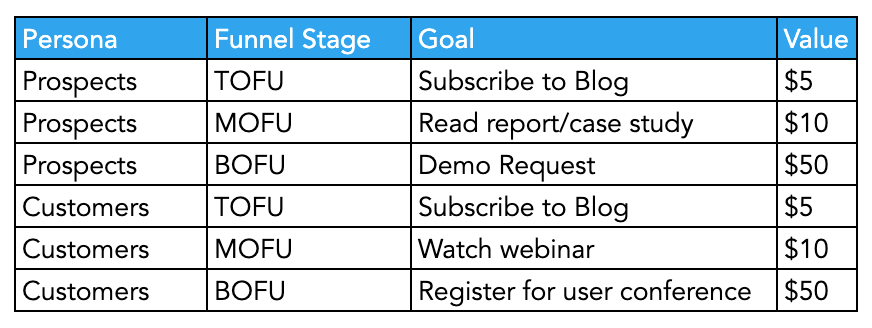Unveiling the Blind Spots: Understanding What Google Analytics Goals Can not Measure
In the realm of digital analytics, Google Analytics stands as a powerful tool for tracking and examining on-line customer communications. However, amid its robust capabilities, there exist blind areas that often escape dimension. Recognizing what Google Analytics objectives can not determine is vital for getting a detailed view of user behavior and involvement. As we explore the complexities of these dead spots, we uncover an intricate internet of uncharted territories that hold valuable understandings into user activities and motivations, challenging standard knowledge and clarifying the limitations of our data-driven understanding.
User Actions on External Platforms
Understanding exactly how customers engage on outside platforms is essential for maximizing online techniques. External systems, such as social networks networks, referral web sites, and online discussion forums, play a significant function in driving website traffic to a business's internet site. By evaluating customer behavior on these systems, organizations can acquire beneficial insights into the performance of their marketing initiatives and the choices of their target audience.
One key facet of user behavior on outside systems is the referral source. By tracking where the individuals are originating from, businesses can identify which platforms are driving one of the most traffic to their website. This information can assist firms allocate their resources a lot more effectively, concentrating on the platforms that produce the most effective outcomes.

Offline Interactions and conversions
Assessing individual behavior on exterior platforms provides useful insights right into on the internet strategies; nevertheless, thinking about offline conversions and communications is similarly crucial for an extensive understanding of a firm's overall efficiency. Offline conversions, such as in-store purchases or phone questions, play a significant duty in numerous companies' success.

Attribution Beyond Last Click
When delving right into the world of electronic marketing analytics, it ends up being important to look past the single touchpoint of the last click for a more detailed understanding of acknowledgment. While Google Analytics gives valuable insights right into individual actions, counting entirely on last-click acknowledgment can be restricting - what data is google analytics goals unable to track. Acknowledgment models that go beyond the last click supply a more nuanced sight of the client journey, taking right into account all the touchpoints that bring about a conversion
Attribution beyond the last click allows marketing professionals to designate debt to numerous communications along the conversion path, giving a more clear image of the performance of various marketing networks. By discovering multi-touch attribution models such as straight, time degeneration, or position-based attribution, companies can better allot their advertising budgets and optimize their approaches for maximum impact.
Recognizing the influence of each Check This Out touchpoint in the conversion process is critical for making notified decisions and maximizing ROI. By welcoming attribution past the last click, services can acquire deeper understandings into consumer behavior and customize their advertising efforts better.
Cross-Device and Cross-Browser Tracking

In a similar way, cross-browser monitoring matches cross-device tracking by capturing customer actions as they change in between different internet internet browsers. Recognizing how individuals engage with internet sites on various browsers can help marketing professionals maximize their on-line experiences to make certain consistency and functionality across different platforms.
Qualitative Data and User Intent
Understanding user intent through qualitative information evaluation is vital for creating targeted electronic advertising and marketing approaches that reverberate with the requirements and preferences of the target audience. Qualitative data offers insights into the 'why' behind user activities, shedding light on inspirations, emotions, and choices that measurable information alone can not capture. By evaluating individual comments, comments, and interactions, online marketers can uncover useful details concerning customer intent, permitting them to customize their messaging, web content, and offerings to better align with a knockout post what their target market is looking for.
Qualitative data also aids in comprehending the context in which individuals engage with a website or application. This contextual understanding allows pop over to these guys marketers to develop even more pertinent and individualized experiences, ultimately driving greater interaction and conversion rates. By diving into customer intent with qualitative information analysis, businesses can gain a deeper understanding of their target market, resulting in more reliable advertising techniques that fulfill individuals' needs and assumptions.
Final Thought
To conclude, Google Analytics objectives have restrictions in measuring individual behavior on exterior platforms, offline conversions, acknowledgment beyond last click, cross-device and cross-browser monitoring, and qualitative data associated to user intent. what data is google analytics goals unable to track. It is very important for companies to be mindful of these unseen areas in order to supplement their data analysis with various other tools and methods to obtain a much more thorough understanding of their audience and improve their total digital marketing techniques
By assessing user actions on these systems, businesses can obtain useful understandings into the efficiency of their advertising and marketing initiatives and the preferences of their target audience.
Evaluating individual actions on exterior systems provides important insights right into on-line strategies; nevertheless, taking into consideration offline conversions and communications is just as crucial for a thorough understanding of a firm's total efficiency.In electronic advertising and marketing analytics, relocating past last-click acknowledgment to discover cross-device and cross-browser monitoring is crucial for gaining a holistic understanding of user communications throughout numerous systems and gadgets. By examining individual comments, comments, and interactions, marketing professionals can discover important info about user intent, permitting them to customize their messaging, material, and offerings to better align with what their target market is looking for.
By diving into user intent via qualitative information evaluation, organizations can acquire a deeper understanding of their target audience, leading to extra reliable advertising techniques that meet customers' requirements and expectations.